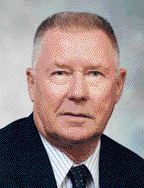The Canadian Mining Hall of Fame will induct five new members at its 20th annual dinner and induction ceremony, to be held on Thursday, Jan. 17, 2008, at the Fairmont Royal York Hotel, in downtown Toronto.
The inductees include former Teck Cominco executive David Thompson, consulting engineer and professor Carroll Brawner, company builder and entrepreneur Chester Millar, exploration geologist Johannes Brummer, and former Falconbridge Nickel Mines general manager Ernest Craig.
The master of ceremonies for the event will once again be Pierre Lassonde, vice-chairman of Newmont Mining and chairman of the World Gold Council.
For more information, visit www.halloffame.mining.ca or e-mail cmhf.info@sympatico.ca or call (519) 599-3050.
CARROLL O. BRAWNER
(BORN 1929)
Carroll O. (“Chuck”) Brawner is known and respected worldwide for his contributions to open-pit mining and geotechnical engineering.
He earned his reputation as a foremost authority in these fields as the result of professional experience gained over half a century in no less than 40 nations and all the world’s continents, including Antarctica. In 1963, he co-founded a consulting firm that provided technical assistance to hundreds of open-pit mines and mineral projects in Canada and around the world. Golder Brawner and Associates subsequently evolved into Golder Associates, an internationally recognized firm with multi-disciplinary expertise.
Brawner was born in Saskatoon, Sask., in 1929, and graduated in civil engineering from the University of Manitoba in 1953. After completing a master of science degree in soil mechanics from Nova Scotia Technical College (now part of Dalhousie University) in 1958, he gained valuable experience in British Columbia, which, because of its mountainous terrain, posed design challenges to both civil and mining engineers. He spent 10 years with the province’s Department of Highways before becoming president of Golder Brawner and Associates, which specialized in the application of engineering principles to the design of man-made slopes in soil and rock. During his years as a consultant, he provided technical guidance on the design and construction of many of the world’s largest and most important surface mines, including coal operations. He earned a reputation as being the best person to solve — and prevent — geotechnical problems, and became an authority on the design, construction and maintenance of stable tailings dams. While providing sage advice, he always strived to protect the safety of people, property and the environment.
In 1978, at the pinnacle of his engineering career, Brawner was appointed a professor of mining engineering in the University of British Columbia’s Department of Mineral Engineering, later known as the Norman B. Keevil Institute of Mining Engineering. He inspired hundreds of engineering students during his tenure in academia, with spellbinding lectures that combined tales of exciting foreign travel with memorable and often unique engineering lessons. His courses on tailings dams and slope stability and mine design were core components of the mining program. He also contributed to the global advancement of geotechnical engineering through dozens of published technical papers and numerous lectures delivered at more than 90 universities and institutes.
Since 1978, he has also continued as a specialist consultant and member of international review boards and panels as C.O. Brawner Engineering. He has edited 10 major mine geotechnical texts published by the Society for Mining, Metallurgy, and Exploration and Miller Freeman Publications, served on numerous technical committees and chaired important industry conferences. His contributions to his profession have been recognized with many awards from North American engineering and mining organizations.
Brawner chronicled his experiences in geotechnical engineering in his autobiographical book, Engineer. . . Around the World in Fifty Years, published in 2006.
JOHANNES J. BRUMMER
(1921-2005)
Johannes J. (“Joe”) Brummer was one of Canada’s most accomplished exploration geologists. During a multi-faceted career that began with great promise in Africa’s Copper Belt and spanned five eventful decades in Canada, he continually pioneered the development of innovative exploration techniques in the fields of geochemistry, Pleistocene geology and geophysics. His openness to innovation and willingness to employ new and original exploration techniques and geological theories contributed to the discovery of at least 10 mines or mineral deposits on two continents.
Brummer was born in Graff Reinet, Cape province, South Africa, in 1921. He was an economic geologist with degrees in mining engineering (1943) and mining geology (1945) from Witwatersrand University, South Africa, and he earned his PhD from Montreal’s McGill University in 1955. As a young geologist in Zambia, he helped create the unconformity/-stratabound model for the Copper Belt, which reversed the prevailing hydrothermal model of the time. His findings were applied by others to generate the discovery of several new deposits along the belt.
Brummer began his Canadian career with Kennco Explorations in 1955, and over the next six years introduced stream-sediment geochemistry to Canada. His efforts set the stage for others to discover new mineral deposits in Canada, including several large porphyry copper and copper-gold deposits in the Western Cordillera. He then joined Falconbridge Nickel Mines and applied new geological concepts and geophysical methods to help find three new deposits in the Manitoba nickel belt. His team discovered the down-plunge extension of the Rod copper-zinc deposit in Manitoba, and used boulder tracing and a study of the Pleistocene geology to discover the George Lake zinc deposit in Saskatchewan.
In 1970, Brummer was appointed exploration manager for Canadian Occidental and remained in this position until 1983. He recognized the potential for blind unconformity-type uranium deposits in Saskatchewan’s Athabasca basin and applied innovative geophysical methods to test this potential, including the first reconnaissance Alphameter survey in 1976. Three years later, under his leadership, a vertical hole drilled through an Alphameter-electromagnetic anomaly intersected ore-grade mineralization beneath 162 metres of Athabasca sandstone. The discovery of the two McClean Lake uranium deposits was followed by the 1982 discovery of the JEB uranium deposit, now mined out.
Brummer’s passion for exploration extended to a broad range of mineral deposit types and included the search for diamonds in North America. His discovery of kimberlites (albeit sub-economic) in the Kirkland Lake area of Ontario in the 1980s established him as one of the pioneers of Canadian diamond exploration. He published many important papers on the geology of Canadian mineral deposits and exploration techniques and impressed his peers with the amazing depth, breadth and diversity of his geological knowledge and willingness to share this knowledge with others, as indicated by his three Barlow gold medals from the CIM. He received several other prestigious industry awards as well, including the Duncan Derry Medal in 1984, the highest award bestowed by the Mineral Deposits Division of the Geological Association of Canada.
ERNEST CRAIG (1888-1960)
Ernest Craig was the first general manager of Falconbridge Nickel Mines, building a mine and a townsite in the late 1920s that became the foundation for the international powerhouse that now operates under the Xstrata banner.
One of 12 children born in Kearney, Ont., Craig left school early in search of employment. He found his calling at age 19, when he began working in the emerging mining camps of Eastern Canada. As he helped build and manage various mines, his talents caught the atten
tion of the legendary mine-finder, Thayer Lindsley, who appointed him the first general manager of Falconbridge Nickel Mines in 1928, the year the company was founded.
Through inspirational leadership and sound management, Craig helped transform a remote Ontario countryside into a world-class mining and metallurgical complex that continues to contribute to Canada’s status as a centre of mining excellence. Eighteen months after his appointment, a 300-ton-per-day mill and smelter were processing ore and concentrates from a new nickel mine serviced by a shaft sunk to 1,000 ft., with more than 4,000 ft. of underground workings.
The Falconbridge site was not part of any municipality at the time, so Craig helped build the town and service it with a hospital and school. He was a compassionate industry leader who believed that the company’s responsibility extended into the community and to the welfare of employees and their families. He was known as the “Town Father” because of his tireless efforts to provide sporting social events and venues such as the Falcona camp for employees’ children. In 1993, Falconbridge (now Xstrata Canada) named its newest and largest mine in the Sudbury basin in his honour. The Craig mine is a fitting legacy for the man who guided the original Falconbridge operations from startup through some very challenging times, including the Depression and wartime.
Craig had other accomplish- ments. With his brother Robert, he helped design the Craig bit, a detachable drill bit that tripled drilling productivity by eliminating the need to sharpen individual steel rods used in underground drilling. The Craig Bit Co. was established in North Bay, Ont. in 1941 to manufacture Craig bits for world markets, and soon became the city’s second-largest employer. The North Bay plant also aided the war effort by manufacturing components for large shells.
After his retirement in 1945, Craig consulted for Falconbridge’s parent company, Ventures Ltd., which sent him to the Peterborough area of Ontario to review an industrial minerals company struggling to develop a deposit of nepheline syenite, a mineral used in glass and ceramic production. He saw merit in the project and recommended building a new mine and mill and a townsite called Nephton. He was appointed president and general manager of American Nepheline (later known as Indusmin Ltd.) and successfully implemented the plan on a tight budget, setting the stage for the company’s subsequent growth and expansion.
CHESTER F. MILLAR (BORN 1927)
Chester Millar launched an illustrious career in the mining industry in the mid-1960s by discovering a copper-gold deposit that became the highly successful Afton mine, near Kamloops, B.C. He founded Afton Mines intending to develop his discovery, but the company was ultimately acquired on the open market by Teck Corp. (now Teck Cominco), which operated the open-pit mine from 1987 until its closure in 1997.
In the early 1970s, Millar turned his attention to the western United States, where he pioneered the use of heap leaching to process low-grade gold ore and demonstrated the success of the method at several open-pit mines. He helped introduce heap leaching to Latin America by writing a technical book on the subject in Spanish that was well received by mining engineers and other interested parties.
Millar is one of the mining industry’s most successful company builders. He helped transform Glamis Gold and Eldorado Gold from junior exploration companies into substantial gold producers with global operations. He contributed to the early growth of Alamos Gold and Castle Gold, both gold producers in Mexico, and he provided guidance to many other junior companies. He believes strongly that mining operations in Mexico and elsewhere should provide long-term rather than short-term benefits to the local people, even if it means slowing down mining rates.
Millar was born in Powell River, B.C., in 1927, and graduated from the University of British Columbia with a degree in geological engineering in 1950. He worked for coal and iron companies before going into the drilling and blasting business, and while on a drilling job became aware of the mineral potential of the Kamloops region. He staked the Afton property and applied percussion drilling techniques to test its potential. The drilling program discovered the high-grade Afton copper-gold deposit that was eventually acquired by Teck.
In the 1970s, Millar became interested in heap leaching of gold ore and recommended the method to the owners of a gold mine with an inefficient mill in California. They rewarded his good advice by making him a co-owner of the America mine, the first open-pit heap-leach operation in the state. He then acquired a gold property that became the Picacho mine and sold this successful heap-leach operation to a predecessor of Glamis Gold. He refined the technique at other mines in the U.S., and further applied it in Latin America and New Zealand.
Millar has few equals as a builder of junior companies. He served as chairman of Glamis Gold from 1985 to 1998 and as chairman of Eldorado Gold from 1992 to 1994, steering both companies to producer status. He co-founded Alamos Gold and guided its acquisition of the Mulatos gold project in Mexico. Over the years, he has also contributed to the growth of many other junior companies.
DAVID A. THOMPSON (BORN 1939)
For more than a quarter century, David Thompson contributed to the spectacular growth and prudent financial management of two of Canada’s oldest continuously operating mining companies. In 1986, while vice-president of finance for Teck Corp., he helped structure a transaction in which Teck joined forces with foreign partners to buy 31% of Cominco Ltd. from Canadian Pacific for $280 million. The two companies merged in 2001 to form Teck Cominco, a world leader in the production of zinc and metallurgical coal and a major producer of copper, gold and specialty metals.
Thompson is widely regarded as one of the shrewdest strategic thinkers in Canadian mining. In the early 1990s, he structured deals that allowed Teck to expand its metallurgical coal interests by operating and eventually acquiring the Quintette mine from a bank consortium, and by purchasing the Elkview mine from receivership. In 2003, through strong negotiating skills and dogged determination, he stickhandled a process that consolidated these assets and those of Fording and Luscar into the Elk Valley Coal Partnership, the world’s second-largest hard metallurgical coal group, and improved Canada’s competitiveness in this market.
In 1995, Thompson became chief executive officer of Cominco and helped transform it into a world leader in zinc production. The company doubled the size of the Red Dog mine in Alaska, which became the largest zinc mine in the world; expanded the Cajamarquilla zinc refinery in Peru; reactivated the Pend d’Oreille mine in Washington state; and acquired the closed Lennard Shelf mine in Western Australia. Thompson oversaw the construction and successful startup of the Kivcet furnace, increased production of specialty metals and improved the environmental performance of the smelter complex at Trail, B.C., to make it one of the most profitable smelters in the zinc industry. In copper, he increased Teck Cominco’s stake in the Highland Valley mine to 97.5% by acquiring BHP Billiton’s 33% position in 2004.
Born in London, U.K., in 1939, Thompson is a graduate of the London School of Economics and the Advanced Management Program of the Harvard Business School. He joined Teck in 1980 from Messina Transvaal in Johannesburg, a copper mining company with industrial interests. At Teck, he served as senior vice-president and chief financial officer from 1980 to 1994, president and CEO of Cominco from 1995 to 2001, and deputy chairman and CEO of Teck Cominco until April 2005. He retired from the board of Teck Cominco in April 2007.
Thompson has enhanced the stature of the Canadian mining industry through a long-held commitment to corporate
social responsibility. He enacted policies to ensure that jobs, training and other benefits flowed first to indigenous communities near the Red Dog mine in Alaska, and advocated similar policies to strengthen Peruvian communities near the Antamina copper-zinc mine in Peru. Since his retirement, he has co-chaired the Competition Council for the B.C. government and in 2007, he was appointed chair of the Vancouver Coastal Health Authority.





Be the first to comment on "Thompson, Brawner among five added to Canadian Hall"